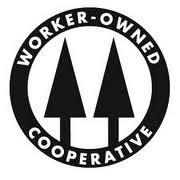
Part 2 of 2
[Editor's Note: this is the second of a two part series by Ajowa Ifateyo on the history of the USFWC. You can read part one here.]
2008 CONFERENCE GOES TO HELP OUT IN NEW ORLEANS
In 2008, a year after the 2007 ECWD conference, Hurricane Katrina battered the city of jazz and Mardi Gras. Quite a few cooperatives, along with musical bands and community members, lost homes and businesses. At the ECWD conference in Asheville, grassroots organizer Shakoor Aljuwani and former Collective Copies member Erin Rice made a strong plea for the next USFWC national conference to take place in New Orleans to help in rebuilding efforts.
The Federation board not only took up the challenge, but also organized cooperators to stay an extra week, called a work week, to offer New Orleans residents skills on cooperative building, and to help in locally determined ways. Cooperators helped the Latino Farmers Cooperative, building community organization strength particularly through Common Ground, the coalition of groups working to help poor people get back on their feet.
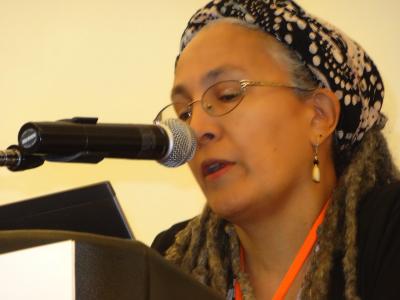 In addition, Jessica Gordon Nembhard led the organizing of a "Showcase of Cooperatives" to explain to local folks what kinds of cooperatives were now functioning, and to model what could be done. That program was a huge success--enjoyed by the locals and the veteran cooperators alike--as everyone got a chance to learn details of what others were doing around the country. That practice has now become a standard part of conferences.
In addition, Jessica Gordon Nembhard led the organizing of a "Showcase of Cooperatives" to explain to local folks what kinds of cooperatives were now functioning, and to model what could be done. That program was a huge success--enjoyed by the locals and the veteran cooperators alike--as everyone got a chance to learn details of what others were doing around the country. That practice has now become a standard part of conferences.
The New Orleans conference was also the year that the Federation made a serious attempt to work on inclusion issues at a national level. From an East Coast perspective, the two conferences often seemed to influence one another. Some examples: In 2003, the Amherst Conference served as a building block for the nationa conferencel. Another example is the union co-op connection. This collaboration came out of the 2007 ECWD conference with Lynn Williams. The ECWD passed a resolution and formed a committee to further research connections between unions and co-ops. The USFWC took on the project at the 2008 conference, and the Union Cooperative Council was born.
Also, in 2007 at the Asheville ECWD conference, a discussion about race in a plenary evoked strong reactions from some participants. Some felt that bringing up race was depressing, while others–including the panelists–stated that in order to organize in this country, especially the South -- the cooperative movement had a great obstacle to overcome: race, in particular animosity among white workers to the advancement of black workers. This issue blew up in the conference evaluation portion of the ECWD.
(Later, Melissa Hoover and I talked about ways take the initiative in bringing these issues to the forefront and providing leadership. To this end, she and I co-founded the Federation’s Inclusiveness Circle and the organizing committee made an effort to provide inclusion and diversity training at the New Orleans conference–though the organizers could not afford the full workshop offered by the People's Institute for Survival and Beyond: Undoing Racism. However, efforts to develop a full national initiative stalled due to participants’ lack of response.)
The 2008 Federation conference had a great showing by the California based, mostly Latina, WAGES Cooperative. USFWC partnered with the Federation of Southern Cooperatives, who had co-sponsored the ECWD conference. FSC member Harvey Reed was the key note speaker.
Unfortunately, I was not able to find any way to determine what difference, and how much of a difference, having about 100 people share cooperative skills and knowledge made to the city. I could not find any of the folks at Common Ground or others who could say what impact the conference and work week, if any, had on the city. However, Jeff Brite of C-4 Tech & Design, had this to say about a possible general impact:
I didn't notice right away, anything right after the conference, though I keep running into people around the city that did go, or wished they had--most of whom I didn't know beforehand. I think it [the conference] helped raise an interest in co-ops that took a little bit to gain traction. With that being said, we don't have more co-ops here in New Orleans. I run into more people that know about co-ops now. It's surprising considering how crazy people looked at us when we started. I think if we were in a different place, we could have taken more of an opportunity to use the energy from the conference to get more people to start them. So I guess the story is a mix.
2010 – CONFERENCE GOES TO THE WEST COAST IN THE BAY AREA
There is at least one tangible benefit that the third conference that took place in Berkeley had in the San Francisco Bay area. One of the attendees was Marilyn Langlois, a representative for Richmond, CA mayor Gayle McLaughlin. I met her on the economic development tour, and she told me that the mayor was interested in the co-op model as a way to deal with unemployment.
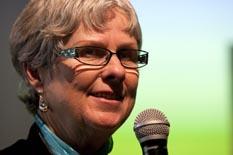 So inspired about what she learned of Mondragon at the Berkeley conference, Langlois and McLaughlin also visited Spain to learn more of the cooperative way of economic way. Fast forward today just four years later, and Richmond has two worker co-ops and a loan fund to develop more and possibly an incubator.
So inspired about what she learned of Mondragon at the Berkeley conference, Langlois and McLaughlin also visited Spain to learn more of the cooperative way of economic way. Fast forward today just four years later, and Richmond has two worker co-ops and a loan fund to develop more and possibly an incubator.
Here’s what Langlois wrote in response to GEO’s question as to what kind of impact she thought the conference might have had on the work in the city of Richmond:
The 2010 USFWC conference had a very deep impact on our work in Richmond. As a result of my participation in that conference as a representative of Mayor McLaughlin's office, we learned a great deal and were inspired to do more. Mayor McLaughlin and I joined a delegation to visit Mondragon, Spain in September of 2010, and subsequently held several community meetings promoting the notion of worker cooperatives.
Since then, the Mayor's work was written up in the LA Times, and an anonymous community member donated $50,000 to help start a revolving loan fund for worker cooperatives in Richmond. It's called Richmond Co-op Loans and has given out two loans so far.
For one year (in 2011-2012) the Mayor's office also got the City Council to appropriate funds to hire a consultant to help educate the community and hold more workshops about worker cooperatives.
At least two worker cooperatives are currently up and running, another one started earlier and is being re-organized, and several more are in the early planning and visioning stages.
There is now also talk about starting a worker cooperative incubator in Richmond, with some planning grant funds provided by The California Endowment.
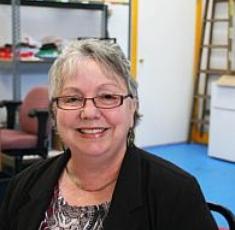 The Berkeley conference saw participation grow to 300, the most ever at the time. For the first time, the participation of people of color and immigrants reached a significant level. Latina groups, including WAGES Cooperative, were present in great numbers. Ji Ming, a Vietnamese immigrant, was a participant on a panel discussing immigrant cooperatives in Colorado. It was a great success.
The Berkeley conference saw participation grow to 300, the most ever at the time. For the first time, the participation of people of color and immigrants reached a significant level. Latina groups, including WAGES Cooperative, were present in great numbers. Ji Ming, a Vietnamese immigrant, was a participant on a panel discussing immigrant cooperatives in Colorado. It was a great success.
The Evergreen Cooperative Laundry was the star of the Federation's Berkeley conference. The model was first developed by John Logue of the Ohio Employee Ownership Center at Kent State University, who made trips to Mondragon in 2005, 2008 and 2009 to learn from the 120-member Mondragon Cooperative Corporation. Later he partnered with the Democracy Collaborative, to build the Evergreen Cooperative Laundry, a multi-stakeholder cooperative mostly funded by $6 million from the city of Cleveland, a nonprofit, two banks, and the Department of Housing. Suddenly, interest in co-operatives exploded.
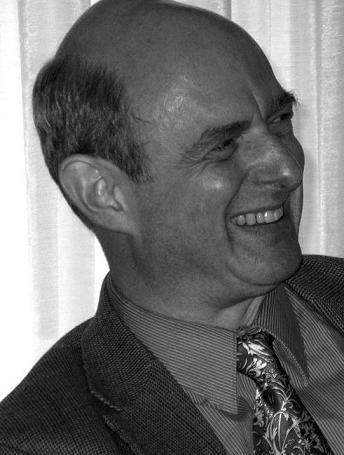 There was an article in the New York Times and suddenly cities all over America wanted to learn about this model. That interest was indicated by PBS sending a camera crew to film the Berkeley conference. Ted Howard from the Democracy Collaborative was the keynote speaker. (Unfortuately, Logue developed cancer and died in December 2009 and was suddenly gone from the cooperative scene. His loss was one of two important setbacks for the movement. The other was the death of University of Massachusetts radical economist Julie Graham, the movement's economist ,who died while traveling. She had been active with cooperative work and education in the Northeast.)
There was an article in the New York Times and suddenly cities all over America wanted to learn about this model. That interest was indicated by PBS sending a camera crew to film the Berkeley conference. Ted Howard from the Democracy Collaborative was the keynote speaker. (Unfortuately, Logue developed cancer and died in December 2009 and was suddenly gone from the cooperative scene. His loss was one of two important setbacks for the movement. The other was the death of University of Massachusetts radical economist Julie Graham, the movement's economist ,who died while traveling. She had been active with cooperative work and education in the Northeast.)
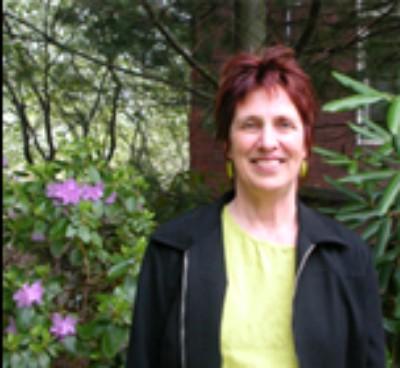 While some people in the worker cooperative movement had, and still have, doubts about whether the top-down project was a true worker cooperative--and the way it had emerged on the scene without apparent input from the national worker cooperative movement--there was an willingness to see what the project would be like and whether an educational component to ensure the workers understood cooperatives would be in place. The involvement of Logue, too, was an important endorsing. Certainly it was an important development to have cities and foundations talking about working together to develop cooperatives.
While some people in the worker cooperative movement had, and still have, doubts about whether the top-down project was a true worker cooperative--and the way it had emerged on the scene without apparent input from the national worker cooperative movement--there was an willingness to see what the project would be like and whether an educational component to ensure the workers understood cooperatives would be in place. The involvement of Logue, too, was an important endorsing. Certainly it was an important development to have cities and foundations talking about working together to develop cooperatives.
BOSTON IN 2012
In Boston, the attendance climbed to 400, up 100 from the 300 who had attended the Berkeley conference. The 2012 conference attracted many people new to the movement. WORC’N (the Worker-Owned and Run Cooperative Network of Greater Boston) helped to organize the conference. A preview of the movie, Shift Change was shown. Among the workshops was one on the Non-Profit Industrial Complex, a subject that had often been discussed in private, but never openly in a conference setting.
 What did the Boston co-op contribute to the movement? I asked Stacey Cordeiro what she felt the effect of the 2012 USFWC Conference in Boston was on the community. Here is her response:
What did the Boston co-op contribute to the movement? I asked Stacey Cordeiro what she felt the effect of the 2012 USFWC Conference in Boston was on the community. Here is her response:
This is a good question; I'm glad you're asking it.
I'm not sure there's anything obvious or simple that we can point to as a direct result of the conference being held in Boston. I do feel like it had an effect, but it might be a kind of diffuse effect, of bolstering the spirits and increasing the confidence of local cooperators that this is a viable option, and they are on a good track.
Our local worker co-op network, WORC'N, did see a surge in interest in the months after the conference in Boston. There are many groups working on new cooperative businesses right now. At one WORC'N meeting, there were a lot of new co-ops represented, and I asked them, “how many went to the 2012 conference, or were inspired by it?” To my surprise, none of them had attended. Some hadn't even known about it at the time. It seems the surge in interest in cooperatives is part of a national trend right now, not because of the conference being hosted in Boston - at least not directly.
That said, I do think there were ways that hosting the conference strengthened local co-ops and our local movement.
For one thing, serving as the conference host committee and working with the USFWC gave WORC'N a concrete project and purpose, where for many years we had been satisfied to go along as a quiet little dinner-party club. We were pretty successful at capturing this momentum, and two years on, WORC'N is still a more active organization before it was before the 2012 conference - although it is not yet everything we would really like it to be.
The conference planning also made room for activists who were interested in cooperatives but not members of one. People like Lynn Murray, Deanne Dworski-Riggs and James Rasza come to mind as folks who contributed to the conference effort, and have since gone on to work in co-ops and become a part of the movement.
And finally, just having access to the conference in our own backyard definitely cultivated the skills and vision of our local co-op entrepreneurs. I think the photographer you mentioned was a member of what would become CERO Co-op. I'm a board member and technical assistance provider for CERO, and in our weekly meetings, the members often refer to people they met or things they learned at the 2012 conference and other co-op events they have been able to attend. The quality of the workshops gives co-op members practical skills as entrepreneurs, the quality and professionalism of the event makes them feel like they are part of a viable and promising movement, and meeting worker-owners from successful and struggling co-ops around the country gives them a picture in their mind's eye about what is possible. I think all of those things are valuable, but hard to measure.
All of this was possible just for the simple fact of this quality event happening in our home city. It's hard to spend the time and money getting to a conference across the country, and most people can't do it, even with a scholarship. Even with the event in Boston, there were still local people who would have liked to go but couldn't because of work or family obligations, for lack of money for the registration fee or just the inability to take time off from work to attend. But having the event in our city made it accessible enough to a lot of people, and I do feel like it had a lasting effect on our local movement.
Actually, I should also mention that, after the conference, I founded the Boston Center for Community Ownership, after working for some years as a consultant for co-ops. So far, we've focused on education and training for cooperatives. Would we have taken this step if it hadn't been for the 2012 conference? I'm not sure. I do think it gave me the confidence and motivation to go forward with this long-incubating idea."
CO-OP MOVEMENT WRITERS
Over the past 10 years, authors who have been intimately involved in the movement have written and/or revised books about cooperation, providing education and background for people wanting to know more. John Curl published a revised copy of For All the People: Uncovering the Hidden History of Cooperation, Cooperative Movements and Communalism in America in 2012. Curl also happily did extraordinary work writing local histories for some cities where the USFWC and ECWD held conferences. He wrote a history of the San Francisco Bay Area (2010), and two monographs for eastern regional conferences in Pittsburgh (2009) and Baltimore/Washington, DC (2011).
John Abrams, of South Mountain Company authored of Companies We Keep: Employee Ownership and the Business of Community and Place. The book first came out in 2005 as The Company We Keep: Reinventing Small Business for People, Community and Place. He had a book signing at the 2005 Eastern conference in Manchester, NH.
Co-op developer Andrew McLeod wrote Holy Cooperation! Building Graceful Economies in 2009 which outlined what the Bible teaches about social organizing and ways Christians have worked together.
And of course, there is Frank Adams, who was one of the first people, if not the first person to write a book on organizing worker cooperatives. His book, co-written with Gary B. Hansen, Putting Democracy to Work: A Practical Guide for Starting and Managing Worker Owned Business, was published in 1992 and revised in 2012.
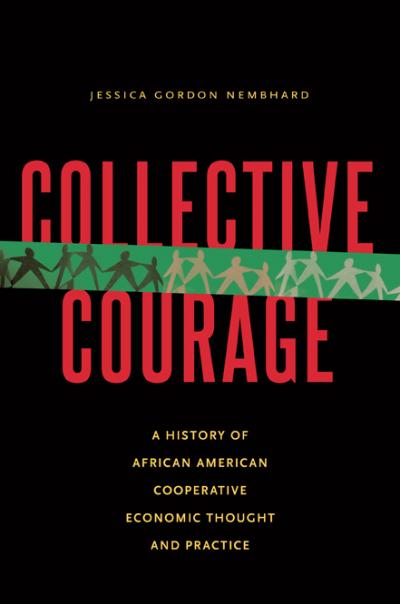 More recently, Jessica Gordon Nembhard's book Collective Courage: A History of African-American Cooperative Economic Thought and Practice shows the history of black cooperatives and how they were critical to the survival of black people in this country. That is a history that everyone should understand, especially black people who have yet, on a large scale. to embrace the cooperative model in the modern version. Hopefully this new information will be an organizing tool that will help get more people of color to embrace this work, which has often been seen as a white hippy movement.
More recently, Jessica Gordon Nembhard's book Collective Courage: A History of African-American Cooperative Economic Thought and Practice shows the history of black cooperatives and how they were critical to the survival of black people in this country. That is a history that everyone should understand, especially black people who have yet, on a large scale. to embrace the cooperative model in the modern version. Hopefully this new information will be an organizing tool that will help get more people of color to embrace this work, which has often been seen as a white hippy movement.
Looking back, we can see how individuals, cooperatives and organizations such as the Western Conference (WWCC), the Eastern Conference (ECWD), the Canadian Federation of Worker Cooperatives, the Ohio Employee Ownership Center, the Vermont Employee Ownership Center, GEO, the Democracy Collaborative, NCBA and others helped to directly and indirectly midwife the USFWC.
Foundation and Foreign Support
One of the groups that have been support the Federation's growth and the development of co-op leaders has been the Ralph K. Morris Foundation. According to Jayne E. Wilgus, the Morris Foundation has provided 81 scholarships directly to Federation conference attendees from 2006 to 2013. Additionally, the foundation provided 95 scholarships for ECWD and 12 for the Western Worker Cooperative Conference, making it possible for roughly about 188 cooperative leaders to meet and learn from each other. The Foundation’s mission statement states that “a major challenge of cooperatives is “perpetuating formidable leadership” to deal with all kinds of economic and social issues. To do so, “ ... cooperatives must apply resources toward maintaining a leadership development system that stimulates ongoing participation and hones the intellectual capacity of the willing. “
The Mondragon Cooperative Complex, too, was an important village participant-player, even directly, in the development of the U.S. cooperative movement. It has been common to hear people (mostly from the West Coast) recall in awe the BBC broadcast of the “Mondragon Experiment,” and how that film inspired them to act to form a co-op. In fact, Arizmendi Bakery, one of the oldest and most successful worker cooperatives in the U.S., is named for Father Jose Arizmendiarrieta who started the first cooperative schools and worker-cooperatives in the Basque region of Spain. We know concretely that John Logue was inspired by Mondragon and many others in this country have made trips to Mondragon. It is one of the places, in addition to Emila Romagna, where we can look to see what can be done. The US Federation is planning a trip to Mondragon this coming September.
Many hands, long meetings, hard work, grants, and personal sacrifices brought us to Chicago for the 2014 Conference.
CALL AT THE ANNUAL MEETING – ALL HANDS NEEDED ON DECK
Traditionally, an annual meeting takes place on the last day of the USFWC conference.
On June 1, 2014 in Chicago, the Federation discussed successes, challenges and work for the coming year; got input for the Democracy at Work Institute in small group discussion; agreed to start on a standard definition of worker cooperatives; and elected regional representatives for the Board of Directors.
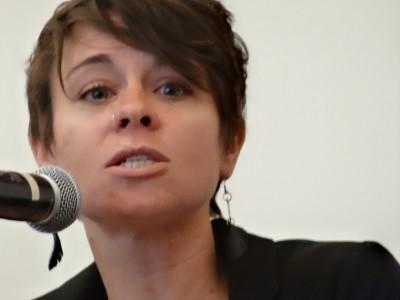 Membership and Advocacy Director Amy Johnson (hired in 2013) listed some notable informational tidbits and accomplishments of the Federation:
Membership and Advocacy Director Amy Johnson (hired in 2013) listed some notable informational tidbits and accomplishments of the Federation:
- Great member retention: “We have an incredible membership retention rate of 98%!”
- New members: Established co-ops who were not members of the Federation joined.
- Policy work was initiated: “We’re now starting to be able to put together a policy agenda.”
- Better website and database: The USFWC revamped its website and installed a member database that allows the Federation to “communicate more easily and so much more effectively.”
- DAWI is a reality: The Institute was officially launched in October 2013 as a 501(c)(3) nonprofit.
In response to a member question, Melissa Hoover explained the difference between DAWI and USFWC. The Federation is a trade organization with a legal structure of a 501(c)(6), which cannot receive donations because it is not tax exempt. DAWI is the “think and do tank,” Hoover said, that will work on research, policy, deeper thinking and organizing.
“From the very first board, it was conceived as two organizations,” Hoover said. “It took us a long time to realize.”
One of the main issues moving forward will be that Hoover’s time “will move to the [Democracy at Work] Institute,” she said. This leaves unanswered question of who will assume the position of executive director.
At the same time, another critical task facing the Federation is the building a national grassroots fundraising campaign.
“We’re facing a serious diminishment of our resources in the Federation,” Hoover said. “We have got to increase membership dues. We have to do a sustainer program,” she said.
Hoover also announced that the Federation was $10,000 in the red, but no questions were asked and no discussion took place about how that would be handled except that Johnson will be “on the road” to visit cooperatives to increase financial support.
2012 Annual Report includes a plan with a goal of achieving 1,000 sustainers by Dec. 31, 2014 which would bring in $120,000 for the Federation’s operating budget.
Hoover said that the Federation will work on increasing member benefits. “We want to rev up services to members,” Hoover said. The Federation has also starting the “big step” of “covering health care,” Hoover said.
The membership body voted to begin the process of defining a worker cooperative for government agencies. The proposal read as follows:
USFWC members support the Democracy at Work Institute staff to lead a process to draft a standard working definition of ‘worker cooperative’ to guide federal government agency recognition of the business model. The process will include engagement with USFWC members. The definition will be both principles-based and practical, and draw on and synthesize existing international definitions, various state legal forms, and current practices.
“We’re seeing a need for self definition,” Hoover said. Federal agencies have asked for a definition. “If we don’t do it as a movement, someone else is going to do it, and we don’t want that.”
While the Federation has accomplished a lot in 10 years, the real work is just beginning. It is a time to consolidate victories, build an independent financial base and to get more people from all kinds of backgrounds involved in every aspect of its development.
“We are going to need all members on deck, all hands on deck” Board Director Kemble said on the last day of the conference at the annual membership meeting.
WHERE DOES THE MOVEMENT GO FROM HERE?
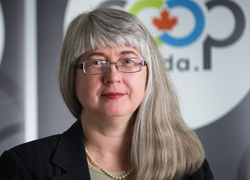 Before the conference, I asked Hazel Corcoran of the Canadian Federation of Worker Cooperatives what she thought the U.S. Federation might need to do, based on their experience.
Before the conference, I asked Hazel Corcoran of the Canadian Federation of Worker Cooperatives what she thought the U.S. Federation might need to do, based on their experience.
Looking forward, I think that the USFWC needs to do what all federations of worker co-operatives must do: create an environment to help facilitate worker cooperative development, provide member services and networking opportunities, and seek to promote worker cooperation especially with other movements for social, environmental and economic justice. In other words, continue with the great work you've been doing!
Federation board director Kemble said:
While we consolidate and build our power as a federation, we must also make connections outside of it. Worker coops have been the driving force behind many of the cross-sector co-op organizations springing up in various cities and regions throughout the country. These cross-sector collaborations and linkages with other social movements pursuing immigrant rights, campaigns for living wages and other labor-related issues will be key to our growth and social relevance in the future.
We see many encouraging prospects.
- Mondragon USA has had success with its Union Cooperatives models adding more power and hope to the movement. Mondragon and the United Steelworkers initiated a collaboration that resulted in “union cooperatives” such as the Our Harvest Cooperative in Cincinnati, OH. This co-op is a worker-owned cooperative produce farm and food hub and processing center, which also trains farmers. This new union co-op model merges the two structures of collective bargaining practiced by the U.S. unions, and the worker ownership principles of the Mondragon Co-operative Corporation. A national network of unionized worker-owned cooperative businesses is underway in 10 cities as a result of a 2009 agreement between Mondragon and the USW. Michael Peck, Mondragon’s North American representative has set up a website for those wanting more information.
- In New York City, organizers have built such a successful network of worker cooperatives that the city council recently approved a $1.2 million initiative to fund the development of worker cooperatives. Other regions from Texas to Seattle are also getting organized.
- As was shown by the local tours and the showcase in Chicago, worker-cooperatives are starting and surviving, as well as local food co-op efforts. Similar work is taking place in Detroit, which had about 20 attendees at this year's conference.
- Jackson, MS saw about 600 people converge on May 2 to attend the Jackson Rising New Economies Conference. The conference, which focused on developing the Jackson area through cooperatives, was the dream of late Mayor Chokwe Lumumba, who suddenly passed away before the conference. The new mayor and city council are not committed like Lumumba was, but the interest and momentum from the populace is clearly there.
- The Baltimore Economic Democracy Conference brought together about 100 people who talked about cooperatives and economic development centered around “cooperativizing” the community. Attendance was from all over the country, even as far away as Colorado, and the diversity of interest and projects was amazing.
- Immigrant co-ops are where some of the most dynamic work is going on in job creation and economic development. Immigrant cooperatives have taken off by providing a primary strategy for making a living in this country. We also have a lot more immigrants and people of color attending all the worker cooperative conferences, both nationally and regionally.
- Momentum is building with other groups concerned with more cooperative lifestyles, economic justice and living lightly on the earth.
Dan Swinney made the following suggestions to build the USFWC in his keynote address:
- Have an impatience or—as I believe—an intolerance with the small scale of the cooperative movement. We should benchmark our work to the standards set by Mondragon and Emilia Romagna and go to a much larger scale.
- The Federation needs to address the issue of why are there so few manufacturing cooperatives, what are the barriers, and what can be done about it.
- Develop and advance policies essential for the growth of cooperatives including favorable tax policy that has been essential to the success of Mondragon and Emilia Romagna.
- Promote debate and critical exchange: We are at the early stage of a movement and the anti-intellectualism that is so common in our society is a luxury a real movement for fundamental change can’t afford; and
- Join the Global Manufacturing Renaissance Alliance.
In addition, more work needs to be done on inclusion and equity issues, marketing and public relations, and grassroots fundraising.
There is great potential for growth if the larger cooperative movement, especially the electric co-ops and credit unions, could be tapped as a resource, suggested Jane Livingston of Cooperative Maine. She reported that there are 29,285 cooperative firms in the U.S. representing 350 million memberships and $3.1 trillion in assets, according to a study by the University of Wisconsin Center for Cooperatives.
"The co-op sector needs to support co-op development instead of leaving it to rich donors and institutions," Livingston said.
Tom Pierson, Anne Reynolds, and Josh Davis contributed to this report.
Go to the GEO front page
Citations
Ajowa Nzinga Ifateyo (2014). USFWC: Ten Years of Achievement: Part 2 of 2. Grassroots Economic Organizing (GEO). https://geo.coop/story/usfwc-ten-years-achievement-2

Add new comment